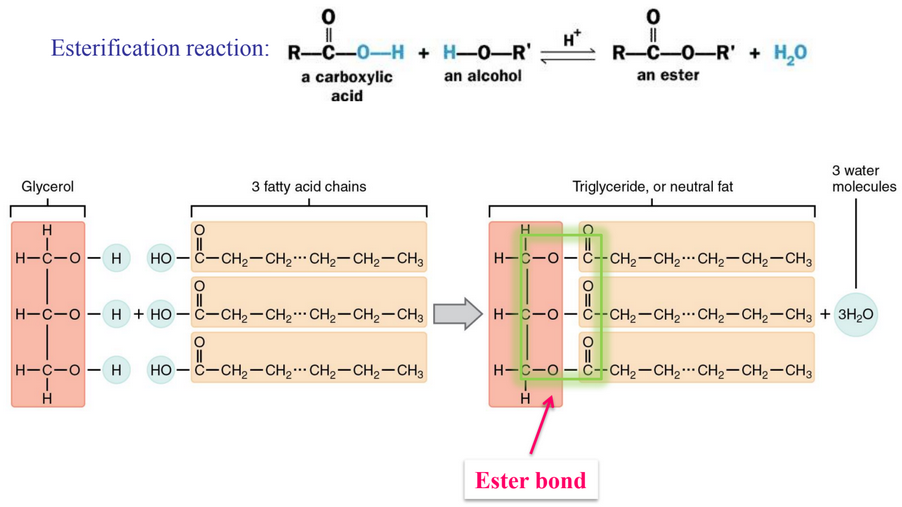10.2 Triacylglycerols
Figure 10.10: Example of a Triacylglycerol
Figure 10.10 presents an example of a triacylglycerol: the simplest lipid from fatty acids.

Figure 10.11: Transesterification in Progress
Figure 10.11 shows lipids being produced via transesterification. Also note the ester bond between the glycerol molecule and the individual fatty acids (boxed in green).
10.2.1 Insulation and energy from triacylglycerols
Fat storage in animals has three distinct purposes:
- Energy production
- Heat production
- Insulation
Figure 10.12: Hydrolysis of Triacylgylcerols by Lipases
In vertebrates, specialized cells called adipocytes are capable of storing a large amount of triacylglycerols as fat droplets that nearly fit into the cell. A lipase is an enzyme that catalyzes the hydrolysis of a triacylglycerol (see figure 10.12), hence releasing fatty acids to export sites to be used as fuel.
The metabolism of fatty acids in animals can also provide water during periods where drinking water is absent. The \(\beta\)-oxidation of fatty acids can be a significant source of dietary water (about 130 molecules of H2O in total) in animals like gerbils, camels, and killer whales.
10.2.2 Brown and whtie adipose tissue
Figure 10.13: Differences in Brown and White Fatty Acid
Figure 10.13 displays several differences between brown and white adipose tissue.